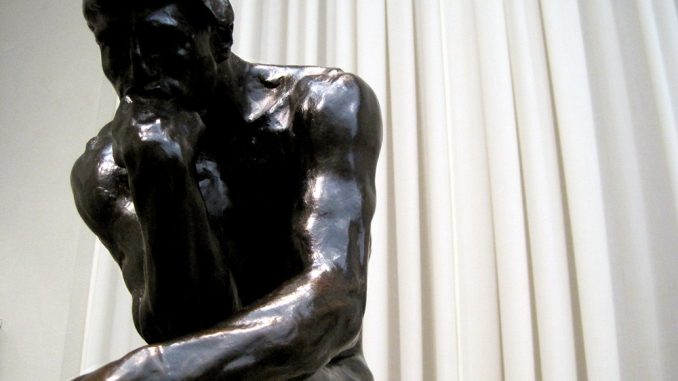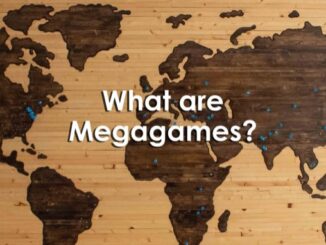
In any face-to-face learning situation, the facilitator has to consider that they may face dissent from the learners. I used to like to believe that as someone who works with adults, that I wouldn’t have to deal with the ‘classroom management’ issues that teachers have to cope with. Most of the time that’s true, but then I moved into a field which to some can be considered ‘controversial’.
For the past several years, I have been facilitating learning, mainly for corporate employees and leaders, in environmental and business sustainability. This includes introducing and exploring topics such as Climate Change, water quality and availability, biodiversity loss and environmental degradation.
The information I have shared in learning sessions can be very distressing, and as time has moved on, and more is discovered about the progress of our environmental crises, it has become more scary. Reactions to this vary. Ideally, we want learners to be scared enough that they want to take action, but not so scared that they feel helpless. For some, either because the situation is too distressing or because of beliefs already held, the reaction is to push back against the learning (and sometimes the facilitator). These kinds of reactions range from occasional questioning of the information being imparted, to in extreme cases, outright denial, and at worst, aggressive and abusive behaviour.
An opportunity to embed transferable skills

This can be a serious challenge for a facilitator, but also a major opportunity, to embed additional skills learning alongside the knowledge acquisition. More than in many other learning topics, participants need to be able to understand and evaluate the information that is being presented to them. They need to be able to make informed decisions on which information to trust, and they need to be able to understand the processes by which that information is derived.
The learning designer not only has an opportunity, but a responsibility to embed some basic learning in Critical Thinking and Scientific Literacy.
This means that experiential learning, and especially games-based learning, with its emphasis on discovery rather than ‘telling’ is particularly appropriate for sustainability learning.
As an example, let us take a corporate learning programme which has the following objectives:
- To make employees aware of the contents of an organisation’s Sustainability Strategy
- To achieve buy-in to the Strategy such that employees will support and work towards targets of the strategy
- Inform employees of personal actions they can take to live more sustainability, and incentivise and empower them to do so
And now let us explore two alternative approaches to achieving this, and particularly to ‘convincing’ sceptical learners.
Learners need to be convinced that action is necessary and more advantageous (to themselves and the organisation) than inaction.
The knowledge transfer approach

The first approach rests on the idea that learners will realise the necessity to take action once they are convinced by a ‘reasoned’ argument, based on claims (e.g. Climate change is a serious problem), reasons (…because climate change threatens our business model) and evidence ( …and here are the data on damage to similar businesses) This approach uses ‘expert’ presenters to deliver information to the learners.:
- About the research underlying the data on Climate Change, biodiversity loss etc.
- Explaining what the data illustrates – e.g. that the graphs show that rates of human-produced carbon correlates closely with rates of global temperature rise.
- A strategy expert from the organisation explains and justifies the contents of the Sustainability Strategy – showing data on the expected impact of environmental crises on the business
For many of the participants this will work well, but these will be the ones who are already convinced of all the things that the ‘reasoned argument’ is seeking to achieve. In effect, the learning is ‘preaching to the converted’, which is a terrific waste of effort.
Unfortunately, for those who just need a little more convincing, or for those who simply do not ‘believe’ in man-made climate change, this approach is likely completely ineffective.
An increasing body of research shows that impressions, once formed, are remarkably persistent, and worse, that they are very resistant to change via logic and reasoning, and facts [1].
If you are now thinking ‘that isn’t right’ or ‘I don’t think that can be true’, reflect on that. You are experiencing exactly what I have described. You believe that reasoning should work and so simply dismiss the claim that it doesn’t.
Various ways in which this approach has failed in learning I have been involved in include:
- Evidence is simply dismissed (“That isn’t true”, “That data has been manipulated”)
- Claims are made that the evidence does not show what is claimed (“Yes the temperature is rising, but that is natural, nothing to do with humans”)
- The credibility of a ‘expert’ is denied because of some perceived shortcoming/vested interest (“She would say that, because she is an activist”)
Even if you have not experienced the above while delivering learning, you can probably all think of examples of this in daily life – people who simply shout ‘Fake news’ when a fact does not suit their narrative.
The ‘Discovery’ approach

In the second approach, there is much less ‘telling’, but this article is not the usual ‘doing vs telling’ polemic. I am not making a claim that experiential learning is better in every case, just that reasoning and presenting facts is not the way to convince those who are sceptical. In fact, the very experience of being ‘told’ may cause a sceptic to become more vehement.
A secondary reason for reducing the emphasis on ‘telling’ in this case, is that imparting ‘facts’ about environmental crises in contact time, is a waste of time. Information, data and knowledge about these issues are readily available. Precious learning contact should be spent giving learners something they cannot readily gain elsewhere. So, the means of achieving the learning outcomes become instead:
- Incentivise learners to discover what they need to know
- Equip learners to find appropriate and trustworthy information
- Equip them to evaluate that information and its sources
- Incentivise learners to act upon what they discover
- Empower learners to act upon what they discover
There is still the need for some ‘telling’. The learners need to know the contents of the Strategy, but a greater emphasis on ‘discovery’ will help to defuse the resistance to being ‘told’.
Understanding ‘how science works’ becomes more important than presenting what science has found in this approach, and becomes part of the process of evaluating the credibility of information derived using the scientific method.
And although presenting reasoning may not be effective, equipping learners with the tools of reasoning can be.
Instead of presenting claims, reasons and evidence to the learners, allow them to work through the material themselves – through ‘games’ which use this material to teach basic critical thinking techniques and an overview of the Scientific Method. Two such games are outlined below.
The Credibility Game
Learners evaluate sources of information, based on credibility criteria and the facilitator takes the role of a coach, giving guidance to teams individuals when they struggle in how to apply criteria
Materials:
- evidence in the from of data, infographics, (short) articles, or web based materials (videos, extracts from TED talks ) etc – the same materials you might have presented in the previous approach.
- A sheet containing information about how to use each of five credibility criteria for evaluating information sources; Reputation, Ability to See/Know, Vested Interest, Expertise, Neutrality. This will involve applying a score, out of 10, for how well the source fulfils each criterion
- Pen to allocate points
If you want to explore the ‘controversy’ in great detail – for example, wanting to look why climate change denial exist, and what the main arguments are, ensure that you have a roughly equal amount of evidence for both ‘sides’. Otherwise, this is not necessary, as you simply want to tutor learners in using ‘Credibility’ as an evaluation criteria – by using those skills on material relevant to the topic.
- Take a ‘controversial’ topic such as Climate Change and layout enough materials so that small teams (of 3 or 4) can take one each (and that they have a good choice)
- Individually, or in small groups, through discussion, participants evaluate the source of the information.
As an example, in evaluating an article from The Guardian newspaper about the disproportionate effect of climate change on refugees and displaced people, a small team of three decide the following:
Reputation. The Guardian has a reputation for high quality journalism including careful checking of sources, but this is slightly tempered by its reputation for being left-wing and favouring the cause of the underdog, which might lead it to exaggerate the effect on refugees. Score 8
Ability to know/see. The article is written by a correspondent who specialises in news from the Middle East. This means they are likely to have good access to primary sources and have based the article on personal experience. Score 9
Vested Interest. The Guardian has a vested interest to continue to be seen as a reliable source of information (a vested interest to maintain a good reputation), and so will not knowingly present false information. Score 9
Expertise. The author is a Middle Eastern political correspondent, but is not an expert in science or the climate, so although they could be considered an expert in some of the socio-political aspects they write about in the article, it is possible that they may have misinterpreted some of the scientific data included in the article and drawn faulty conclusions. Score 6
Neutrality. The Guardian does have a left-wing bias and criticisms of international response to the plight of the Syrians, and other criticisms of governments and individuals in the article may stem from this bias. Score 4
- In turns teams present the arguments about the credibility of each piece of information – but without stating their scores. While one team presents, the others listen and also allocate scores in two ways:
- What they think the ‘right’ answer is – what the facilitator will reveal during scoring
- The score they believe the presenting team will have given to each criteria, based on their presentation
- After each presentation the facilitator reveals the ‘right’ score for the information source. The facilitator also leads any discussion on why these scores have been allocated – if any. Presenting teams score 3 points for getting any score ‘spot on’, 2 for 1 point away, and 1 for 2 points away. 0 otherwise. Other teams score in the same way for ‘matching’ with the right answer, and with the answers given by the presenting team.
- Top scoring team wins.
The same format could be used to create games for other critical thinking tools, such as recognising fallacies or argument flaws.
Zendo

A game created by Kory Heath His theme for the game was (loosely) Buddhism, but Nick Bentley later wrote in his blog that the game could be used as an analogy of the scientific method[2]. The original games uses ‘Looney Pyramids’[3] although you could use Lego® or other objects.
In simple terms, one player (‘The Universe’) creates a law of nature by positioning at least 3 objects in an arrangement on the table. The other players then ‘experiment’ and ‘hypothesise’ by creating their own arrangements or by stating their ‘best guess’ aloud.
The game is simple, but very effectively demonstrates how superstitions arise from incorrect interpretation of observations, the value of repeated experimentation, the value of Occam’s Razor.
So often, ‘learning’ is designed to be about knowledge transfer. Obviously this is an important aspect of many learning programmes, but often it is the case that learning programmes transfer much more information than is needed to achieve the stated objectives. In the example above, although it might be interesting to the participants to learn about the science behind Climate Change, it is ‘nice to have’ rather than essential to the objective. What is important is that participants are sufficiently convinced, that those who do know about the science of Climate Change, are correct in their conclusions about the issues it will cause.
Again, I must stress, that the above statement is not about favouring experiential learning over presentation, because much experiential learning is also about knowledge transfer. It is about a preference for equipping learners with tools to advance their own learning, rather than creating a situation in which a specific subset of knowledge can be ‘consumed’. Simply put, the goal of any learning experience is to turn a participant into a learner, progressively and continuously.
“Give a man a fish and he will feed himself for a day, teach him to fish and he will feed himself for a lifetime”
– Confucius (possibly)
[1]New Yorker article about why facts don’t change our minds
[2]Nick Bentley’s blog post on Zendo as a tool for teaching the Scientific Method
[3]Looney Labs store selling Looney pyramids and other resources
- James Bore – The Ransomeware Game - 13th February 2024
- Ipsodeckso – Risky Business - 23rd January 2024
- Review – Luma World Games - 15th December 2023





A very discerning game that applies the five credibility criteria for evaluating information sources:
1. Reputation,
2. Ability to See/Know,
3. Vested Interest,
4. Expertise, and
5. Neutrality.
I found the example of Zendo absorbing, because it reminded me of a game I played in my early youth to develop my symbolic logic skills; WFF N PROOF (https://en.wikipedia.org/wiki/WFF_%27N_PROOF).
Thanks Michael. Zendo is really good. It’s also worth checking out the games published on the fan-run wiki. There are 100s of them https://www.icehousegames.org/wiki/index.php